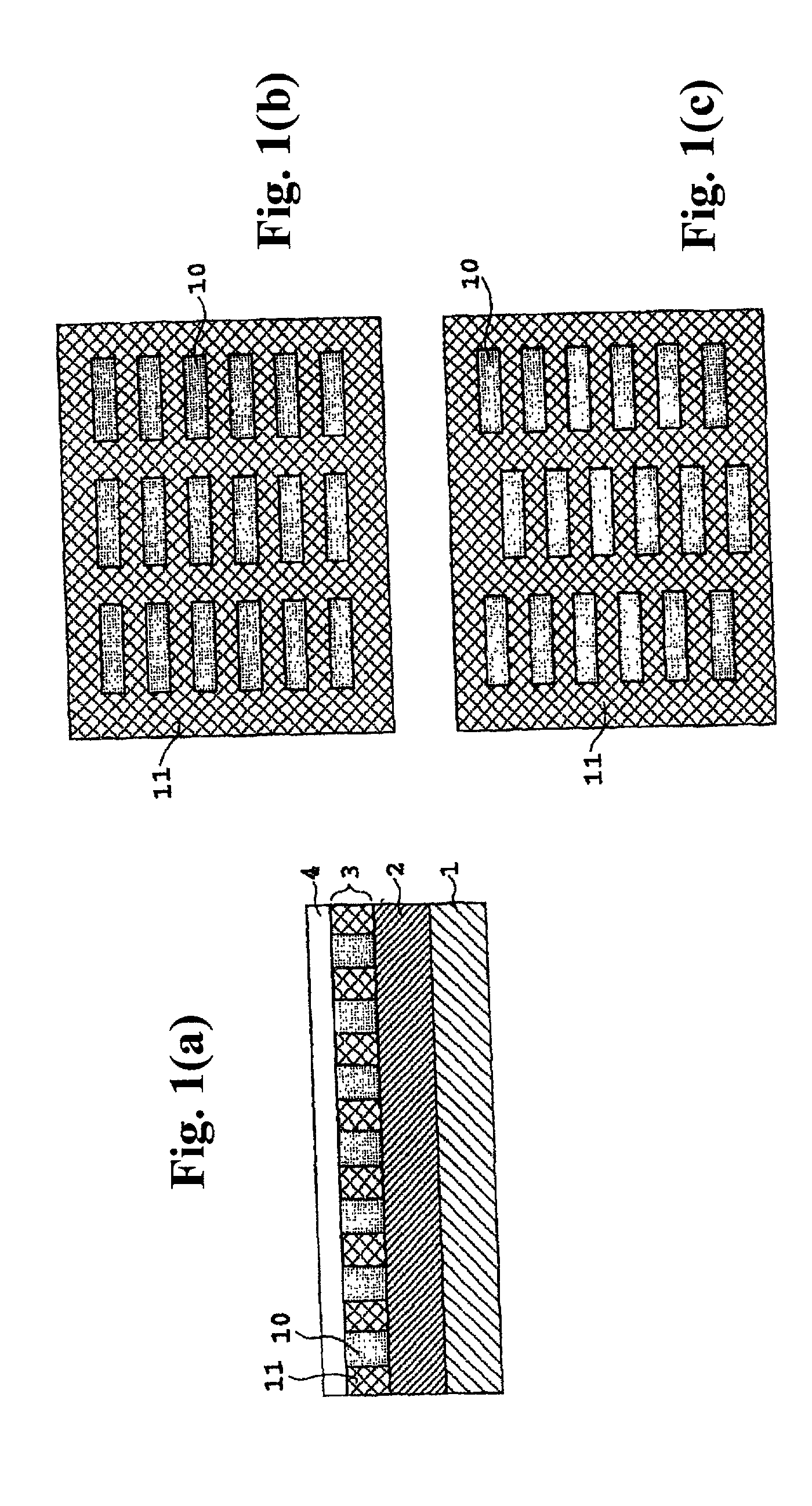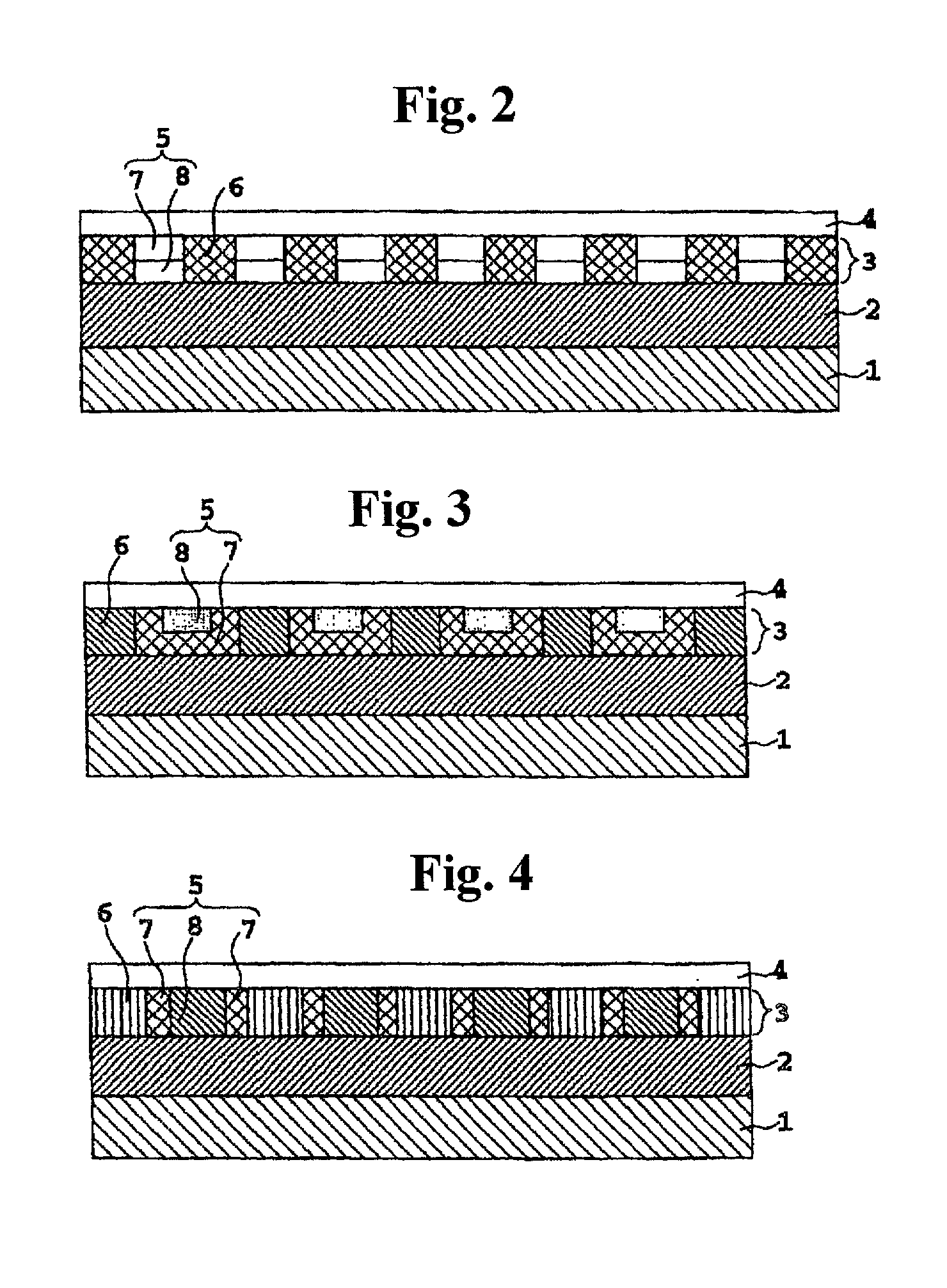Magnetic recording medium
a magnetic recording and recording medium technology, applied in the field of qmd, can solve the problems of difficulty in retaining written information, difficulty in reversing the magnetization direction of a specific crystal grain, etc., and achieve the effects of eliminating magnetic interference, stabilizing the magnetization of the hard magnetic layer 8, and eliminating the cancellation of the magnetization of neighboring hard magnetic components
- Summary
- Abstract
- Description
- Claims
- Application Information
AI Technical Summary
Benefits of technology
Problems solved by technology
Method used
Image
Examples
example 2
[0073] A first magnetic recording medium shown in FIGS. 2(a)-2(c) was manufactured in the same way as in example 1, except that a soft magnetic layer 7 was formed on top of a hard magnetic layer 8. That is, the locations of the soft magnetic layer 7 and the hard magnetic layer 8 are interchanged from example 1.
[0074] Stability in magnetization of the medium was studied in the same way as that in example 1 to find that the medium in example 2 reverses magnetization at a magnetic field of some 3500 Oe.
example 3
[0075] A third of a first magnetic recording medium shown in FIG. 3 was manufactured in the following way.
[0076] An under layer 2 was formed on a non-magnetic substrate 1. An isolating layer 6 was formed by patterning holes part way through an isolating layer 9 in the same way as that in example 1. Then, a soft magnetic layer 7 was formed higher in the holes patterned in the isolating layer 9, followed by chemomechanical polishing to give a flat surface of a medium under manufacture.
[0077] Applying poly-methylmethacrylate resin membrane, patterning with electron beam, and etching a soft magnetic layer 7 with reactive ions for the second time gives recesses into which a hard magnetic layer 8 is deposited. Finally, forming and flattening a hard magnetic component provides a magnetic recording medium shown in FIG. 3.
[0078] The stability in magnetization of the medium was studied in the same way as that in example 1 to find that the medium in example 3 reverses magnetization at a magnet...
example 4
[0079] A fourth of a first magnetic recording medium as shown in FIG. 4 was manufactured as in example 3 above except that holes leading to the under layer 2 are formed instead of forming recesses in the soft magnetic layer 7, the hard magnetic layer 8 in this example comes into contact with the under layer 2.
[0080] Stability in magnetization of the medium was studied in the same way as that in example 1 to find that the medium in example 4 reverses magnetization at a magnetic field of 3500 Oe.
PUM
| Property | Measurement | Unit |
|---|---|---|
| Force | aaaaa | aaaaa |
| Soft magnetism | aaaaa | aaaaa |
| Magnetism | aaaaa | aaaaa |
Abstract
Description
Claims
Application Information
 Login to View More
Login to View More - R&D
- Intellectual Property
- Life Sciences
- Materials
- Tech Scout
- Unparalleled Data Quality
- Higher Quality Content
- 60% Fewer Hallucinations
Browse by: Latest US Patents, China's latest patents, Technical Efficacy Thesaurus, Application Domain, Technology Topic, Popular Technical Reports.
© 2025 PatSnap. All rights reserved.Legal|Privacy policy|Modern Slavery Act Transparency Statement|Sitemap|About US| Contact US: help@patsnap.com



